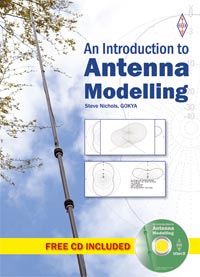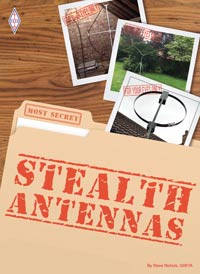
In the next round of tests I used the same 9:1 Un-Un wound using PVC covered cable and a T200-2 toroid. Note in the photograph that the PVC tape is only used to keep the turns neatly arranged.
If you want to build your own follow these instructions:
Building a 9:1 unun
Note: you could also use a T130-2 toroid, but that will be limited to a maximum of about 75-100W.
To understand how to construct an unun lets build a 9:1 version. You will need a T-200 (red) toroid and three pieces of wire, each 24 inches (60cm) long . It will also help if you a small plastic box with an SO239 socket mounted at one end and with two wing nuts or mounting posts at the other. In the UK you can buy a small plastic box from Maplin which is watertight with a rubber seal, yet inexpensive.
It will help if the wires are different colours, although that isn't critical if you have a multimeter available. It just makes it a lot easier to follow these instructions.
For the sake of this explanation I'll assume that you are using green, red and black pieces of wire.
Put the three pieces of wire together and wind them carefully onto the toroid. Place the wires (left to right) green-black-red, and wrap nine turns on to the toroid.
Try not to let the wires overlap.
You should end up with a toroid with three wires extending from the left winding and three wires extending from the right.
Now twist and solder the left black wire with the right red wire. This can be covered with PVC tape once complete.
Now twist the left green wire with the right black wire. Strip the ends of the two wires, twist and solder them together leaving the length about 2” long from the toroid.
Finally trim and strip the remaining right green wire and solder another 5” piece of green solid wire to it.
Now take the left green wire and right black wires that you twisted together and connect them to the centre pin of the SO239 socket – this is the input side and will connect to your radio via a length of coax.
One of the green wires is now soldered to the ground connection of the SO239 socket. The other end of the wire you soldered on (which is connected to it) becomes the earth connection for the unun and typically goes to a ground stake and ground radials.
This leaves the remaining red wire which connects to the other wingnut and will become the connection for the antenna.
If you are worried about the wires unravelling you can either use PVC tape to hold them in place or plastic cable ties.
So how do we use an unun? Lets look at a typical example.
This time I erected a 10m high fishing pole and attached a 65ft quarter wave antenna for 80m in an inverted L fashion. That is, 10m up and then 9.8m out to the nearby summerhouse.
This was arranged away from the house and fed with 12m of RG8 coax, a single earth stake and two 20ft radials at the feed point..
Here are the SWR readings at the end of the coax:
3.5MHz – SWR 3:1
3.65MHz – SWR 4.2
3.8MHz – SWR 5.9
7.10MHz - SWR 13.6:1
10.1MHz – SWR 2.5:1
14.2MHz – SWR 3.3:1
18.14MHz – SWR 1.8:1
21.2MHz – SWR 2.4:1
24.9MHz – SWR 1.9:1
28.5MHz – SWR 1.2:1
From this you can see that by shortening the wire to 65ft from the original 85ft you gain 80m, but lose 40m. The rig (FT2000) would quite happily tune seven bands with its internal ATU.
Here are the quick comparison results against my 80m Windom and parallel-fed dipoles in the loft for 40m, 20m, 17, and 10m.
80m
Not as good around the UK as the Windom - probably due to the maximum current being in the vertical section. Modelling shows the antenna to be down about 10dB on a low dipole.
30m
Lithuania similar. Other EU and Italy similar. Bulgaria down 2 S points
17m
Similar – inverted L has slight edge at times. Slightly noisier
15m
Better than Windom by about 1 S point.
10m
Much better than Windom, dipole and mag loop around Europe via Es, by about 2 S points. Slightly more noise (+ 1 S point).
From this I can see that I need to do more tests, especially on 20m, but for an all-in cost for the antenna of about £15-£20 it shows promise. If you have a tree then the up and out idea with a 65ft wire looks quite good. A way to get 40m back would be to put a 40m trap in the wire at the 10m mark.
If you don’t fancy making your own UnUn you can buy the whole antenna from the Snowdonia Radio Company for £35 inc P&P – see http://www.snowdonia-radio-company.co.uk/srcproducts.html










This is super trafo in UK USA RPA world, but dont make it like blink man! Use Gird Dip Meter! My first trafo have resonance in 2,3 MHz and its problem \
ReplyDeleteIf You make trafo for 3,5 MHz SWR 1:1,1
But its big work!
frycz.pl
You mention a T200-2 and a T130-2. Which were you using?
ReplyDeleteAh! I see what you mean - I've edited it now. I used a T-200. Either will work, but the T-200 will take up to about 200W and the T-130 about 100W. T-200 is what I had in the box.
DeleteWhat gauge wire are you using?
DeleteIt isn't that critical. I think it was 1mm PVC coated wire.
Delete